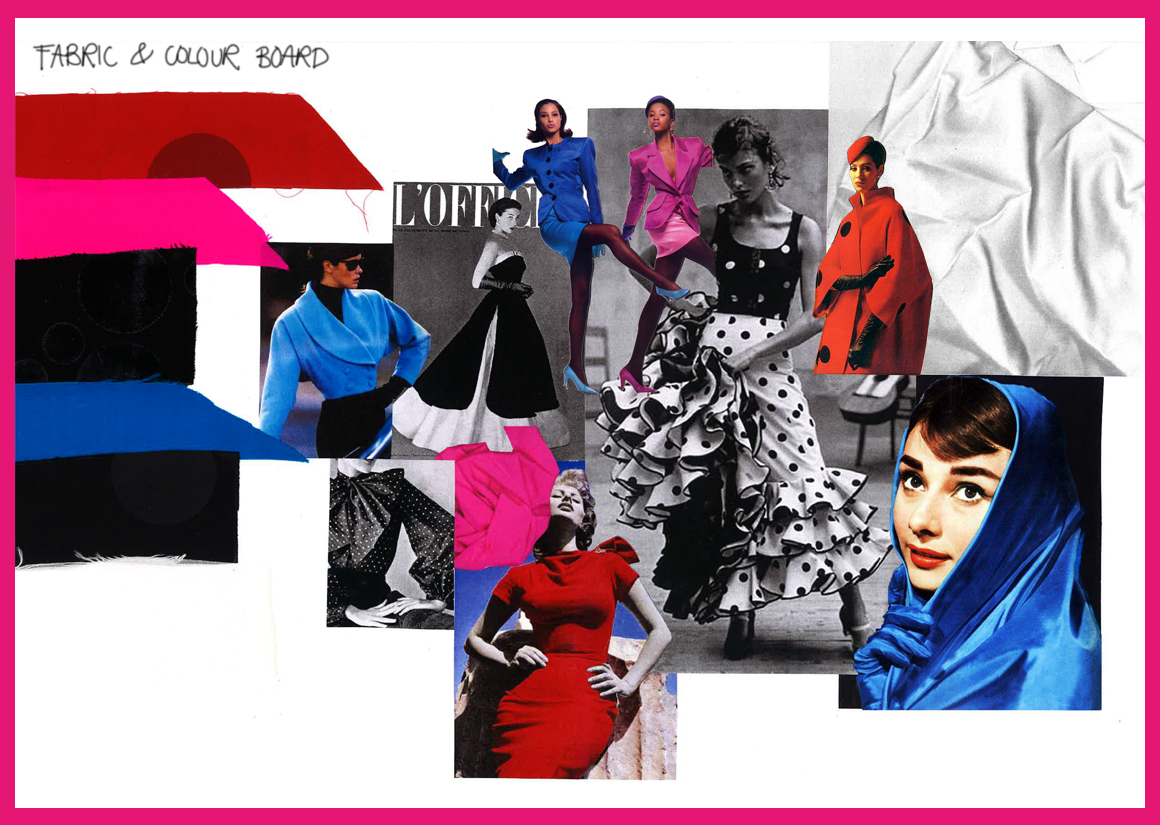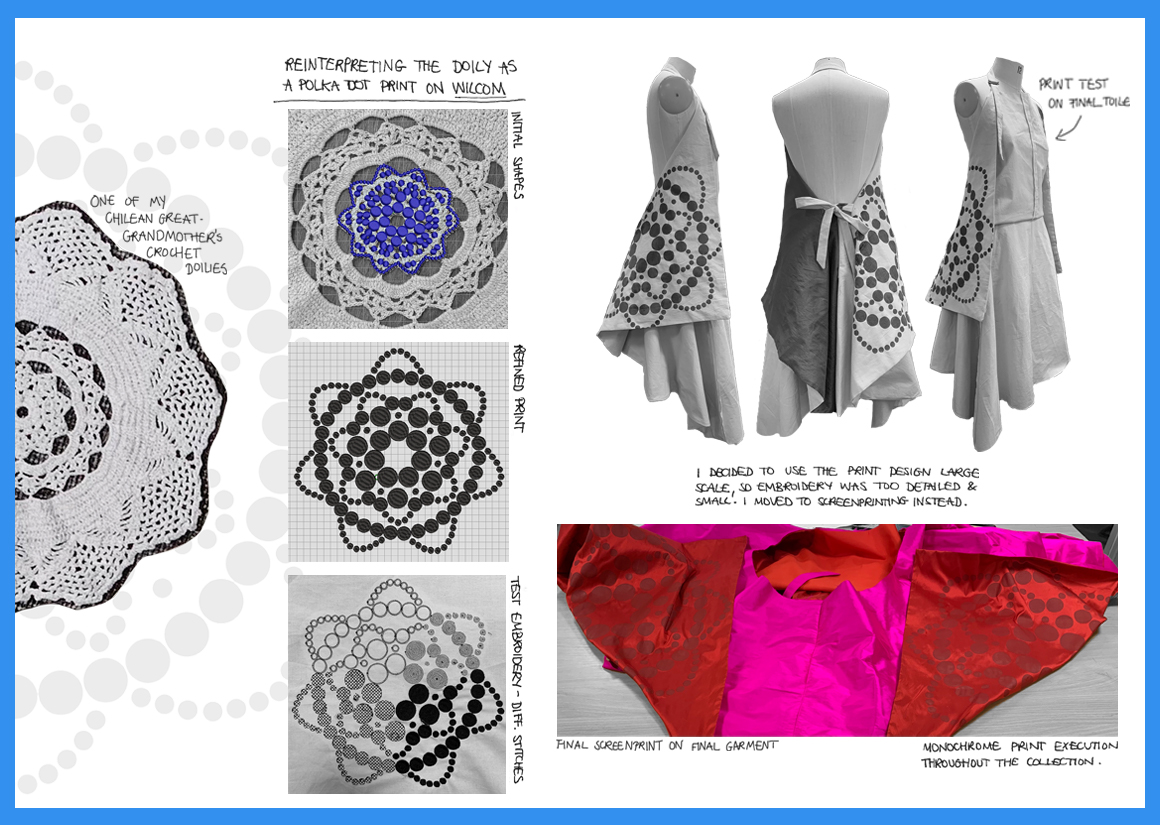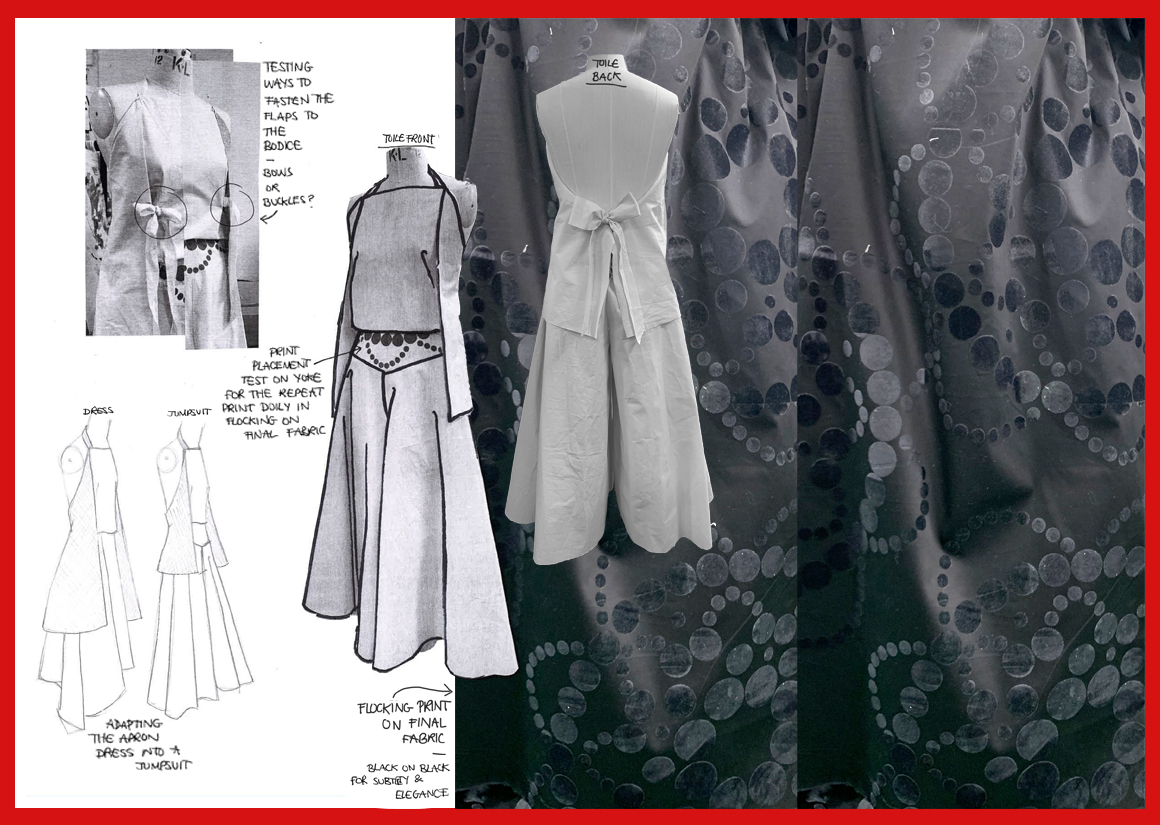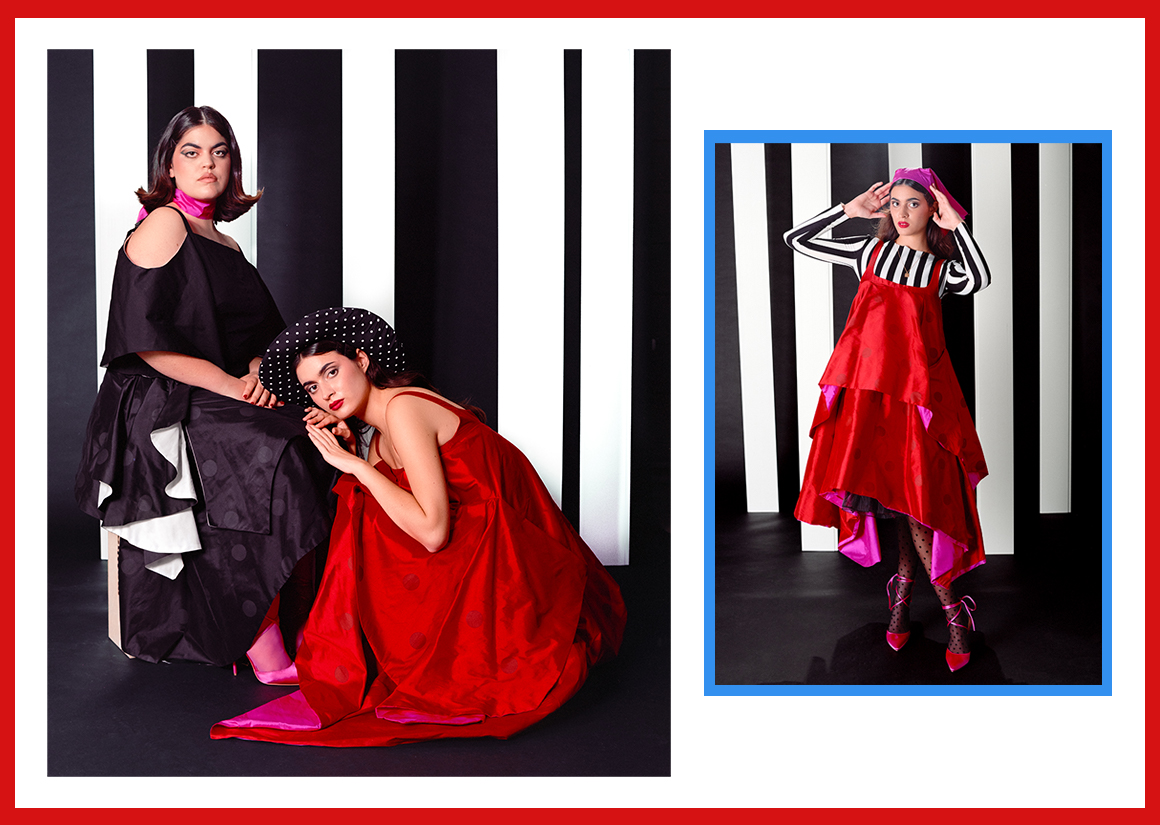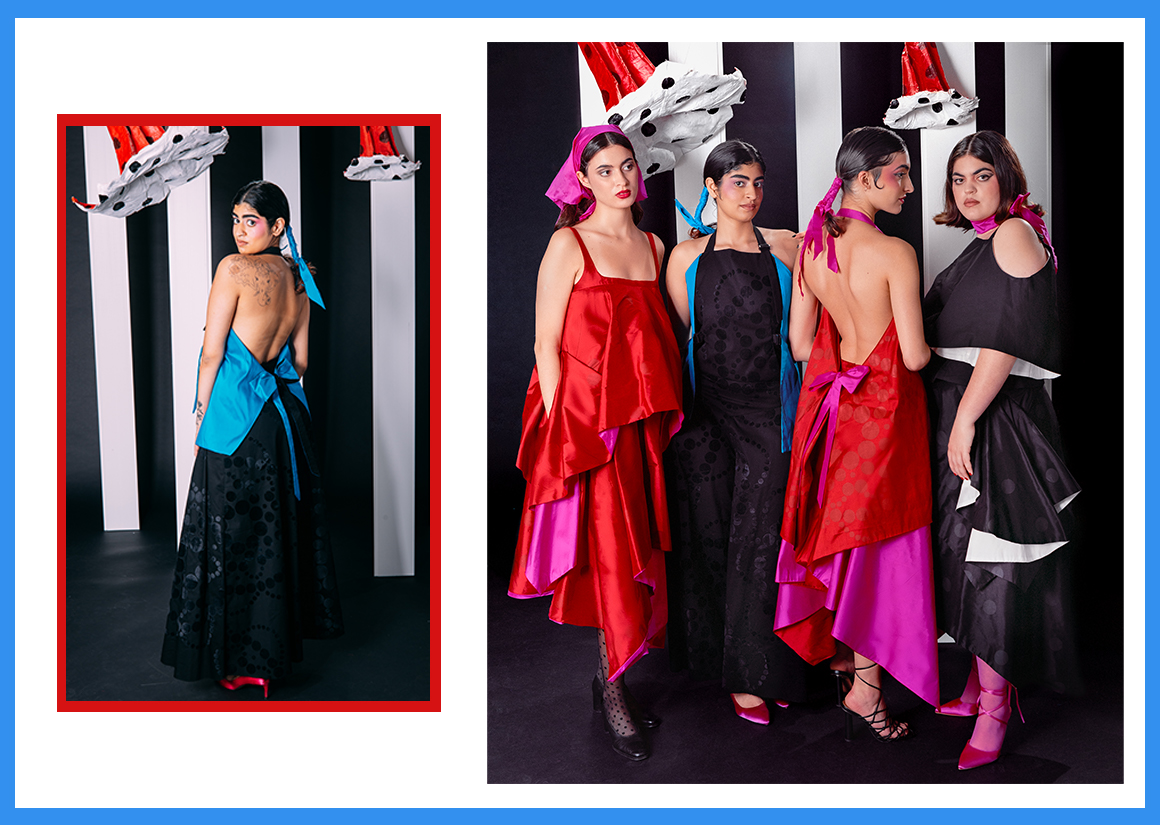
About Me
Hi, I’m Lolita! Fashion BA Graduate from Arts University Bournemouth.
Lolita Gosling is a British designer with Chilean-Italian heritage, born and raised in London. Her experience of cultural nuances growing up has shaped her identity and point of view as a designer. Nostalgia, femininity and revelling in the joys of dressing up are key reference points that Lolita has been able to investigate and build upon over her degree.
It’s interesting how small things can have such a large impact on someone’s passions and pursuits in life. When I was a child, my mum would play old musicals like Singing in the Rain and Funny Face on TV whilst she took care of my siblings and I. These perfect, technicolour images had a life-lasting impact on me and are still at the core of why I aspire to emerge myself in a creative world. Fashion, Music, and Film are connected by a love of storytelling and escapism. They have guided my recognition of and appreciation for my heritage and identity.
INSPIRATION
I began my FMP by dissecting key childhood references and my relationship with my cultural heritage.
My Latin mother and grandmother inject love into everything they do. Throughout my childhood they shared food and values that I keep with me today. Latin women are generally stereotyped and underrepresented in western media, so I wanted this collection to honour the strong and lively Latin women in my life. At the time of conducting research into my family, I came across the Brugmansia Suaveolens, a beautiful South American flower that I later discovered can kill you if inhaled or ingested.
This deadly flower with a facade of beauty inspired a metaphor for Latin women; beautiful but underestimated for what more lies beneath the surface. I visually communicated this by juxtaposing glamorous and domestic imagery, key stereotypical representations of women. I referenced my childhood icons, most notably, Audrey Hepburn, Frida Kahlo and Rita Moreno in the process. Having such an array of colourful characters in my research breathed life into the collection from the start.
MY WORK
PORTFOLIOS
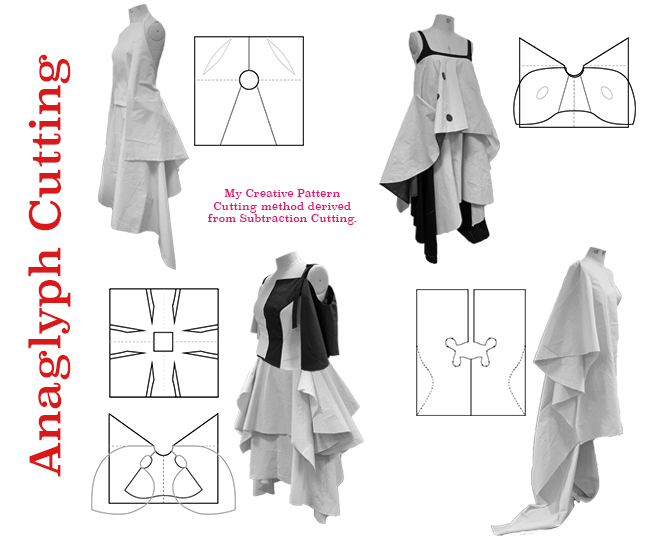
DETAIL
Developing my own Creative Pattern Cutting methodology from subtraction cutting.
I began my FMP design process with 3D experimentation from the get-go This quickly lead me onto a subtraction cutting (SC) method of cutting a circle out of a square, folding and wrapping it around a mini-maquette. This simple but effective drape underpinned my continued experimentation and 3D development. The more I built upon this SC method, the more distinguishable my own approach became. Traditional SC moves away from the figure, with focus on abstract shapes. My method, which I have named Anaglyph Cutting, works in reverse. Subtractions are directly informed by the body, eg. sewing a circle on itself at the waist to create an hourglass illusion, without restricting the wearer. This approach has resulted in flattering yet comfortable forms without the need for lots of seams and suppression. An Anaglyph is a 2D image that appears 3D when viewed through an alternate lens. This relates to my pattern cutting method; the body being the lens that transforms my flat square patterns into 3D garments.










